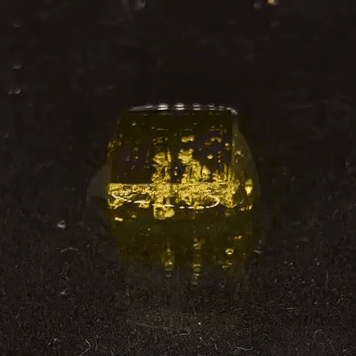Innovative Water-Based Shields for Astronaut Radiation Protection
Researchers explore 3D-printed hydrogels as a novel solution for protecting astronauts from harmful space radiation.

Hydrating the Future of Space Exploration: A Water-Based Shield Against the Cosmos
Imagine hurling through the vast, empty expanse of space, encapsulated in a vessel that's both your chariot and your sanctuary. Now imagine that this sanctuary is constantly bombarded by invisible, yet perilously potent radiation. Space, the final frontier, is not just a realm of awe-inspiring beauty and boundless exploration but also one fraught with invisible dangers. At the heart of this dichotomy is the quest to protect those daring enough to venture into the cosmos—our astronauts. Enter a team of visionary researchers from Ghent University in Belgium, whose innovative approach to radiation protection might just revolve around one of Earth’s most abundant resources: water.
A Shield Born of Water
The concept is as intriguing as it is simple—3D-printed hydrogels, capable of absorbing massive amounts of water, poised to serve as a bastion against space radiation. These aren't just any materials; they are the frontline defense in the battle to safeguard our spacefarers and their intricate instruments against the cosmic radiation that permeates the vacuum of space. Without adequate protection, the very tools designed to probe the mysteries of the universe could falter, and the health of astronauts could be at grave risk.
From Concept to Cosmos
Hydrogels, with their sponge-like ability to soak up water, might not seem like the obvious choice for cosmic radiation shields. Yet, it's this very property that makes them ideal candidates. When it comes to blocking radiation, water is an unsung hero. The principle is akin to Earth's own atmosphere, which protects us from the sun's harmful rays. By leveraging the shielding properties of water, encapsulated in a shape-retaining hydrogel, researchers can create barriers that are not only effective but also versatile and lightweight.
This innovation dovetails perfectly with the broader narrative of space exploration's future, where sustainability and resource efficiency are paramount. As we set sights on distant worlds, the materials we choose to bring with us—or, in this case, create en route—will determine the success and longevity of interstellar voyages.
Bridging Worlds
The implications of this research stretch beyond the immediate technical benefits. In an era where space travel is becoming increasingly democratized, and the idea of Martian colonies and lunar bases shifts from science fiction to impending reality, the need for effective, sustainable protection against space radiation has never been more critical. This development represents a convergence of ecological awareness and space exploration, a testament to human ingenuity's ability to find solutions in the harmony of nature and technology.
Moreover, the potential applications of hydrogel technology extend into areas like medicine and environmental protection, underscoring the interconnectedness of space research and terrestrial benefits.
A Human Touch Among the Stars
Behind every great scientific advancement lies a team of dedicated individuals, and the Ghent University researchers are no exception. Their work is propelled by a vision of a future where humanity can explore the stars without the looming threat of radiation. It's a pursuit that marries the technical with the deeply human—a desire to protect our own as they journey into the unknown.
As we stand on the brink of this new era in space exploration, it's essential to remember that the cosmos is not just a realm of cold, distant objects. It's a place that humans aspire to inhabit, to learn from, and ultimately, to call a second home. Innovations like the hydrogel radiation shield are more than just scientific achievements; they're stepping stones towards a future where the infinity of space feels a little closer to the warmth of Earth.
Charting the Waters Ahead
As we contemplate the journey ahead, it's clear that the path to the stars is paved with both challenges and innovations. The work of the Ghent University team is a beacon of hope and a reminder of the resourcefulness that defines our species. By looking to something as simple yet profound as water, we find new ways to protect and propel our astronauts towards the heavens.
In the grand tapestry of space exploration, each thread—each idea, each discovery—builds upon the last to create a picture of a future where humanity reaches beyond the confines of our planet. The hydrogel radiation shield is one such thread, woven into the fabric of our cosmic ambition. As we look to the stars, we carry with us the best of our world, armed with the knowledge that sometimes, the solutions to our greatest challenges can be found in the most elemental of places.
In this quest to conquer the cosmos, we're reminded that the journey matters as much as the destination. It's a journey of innovation, of overcoming the odds, and, most importantly, of never forgetting that the greatest advancements often come from looking at our world—and beyond—with fresh eyes and a boundless imagination.
This article was based on news originally published by ESA. Read the original article here.
#astronomy #science #space #esa #orbitnews